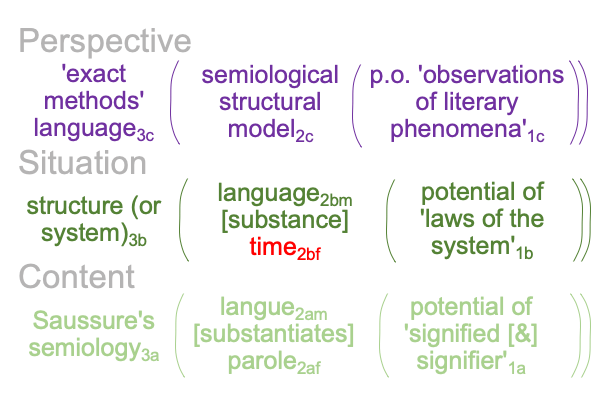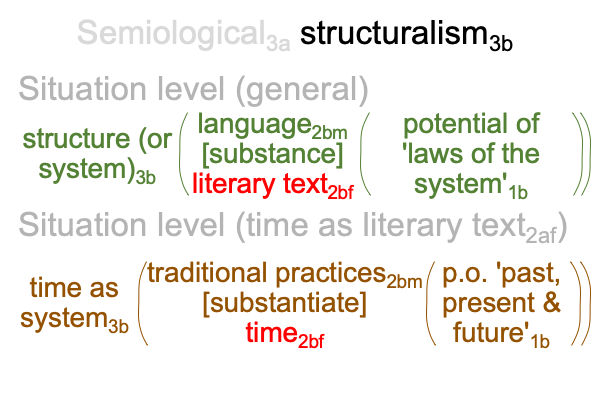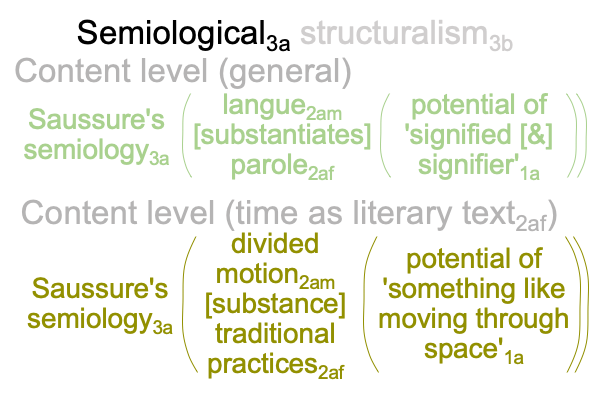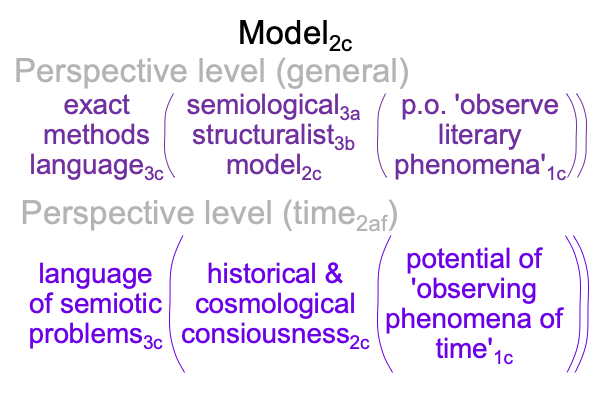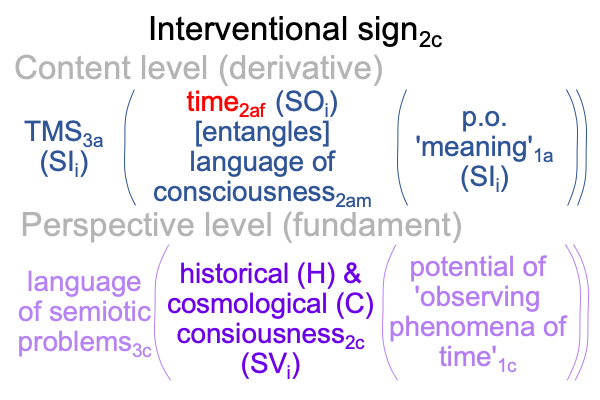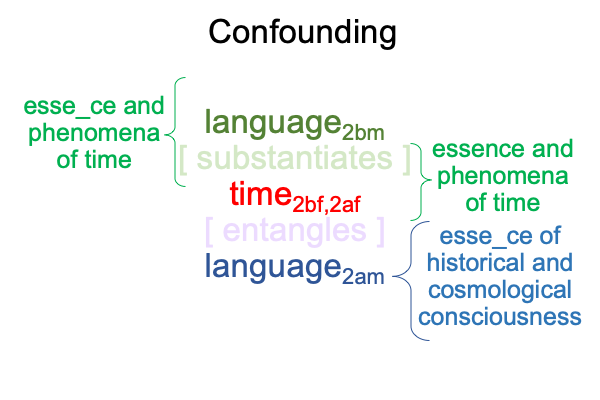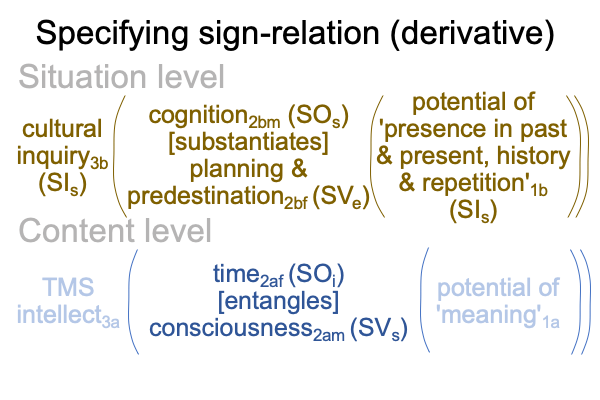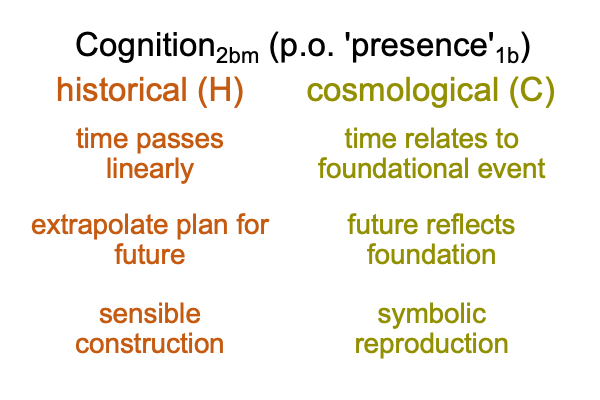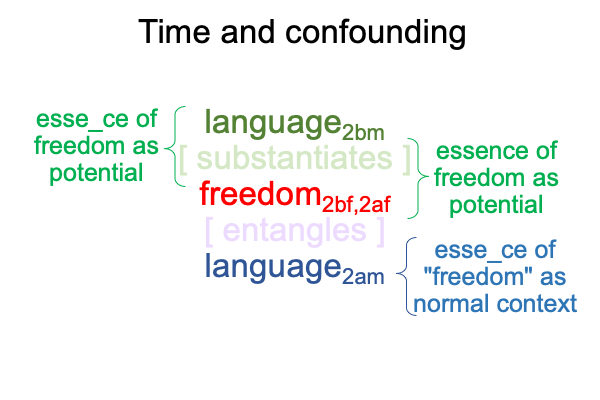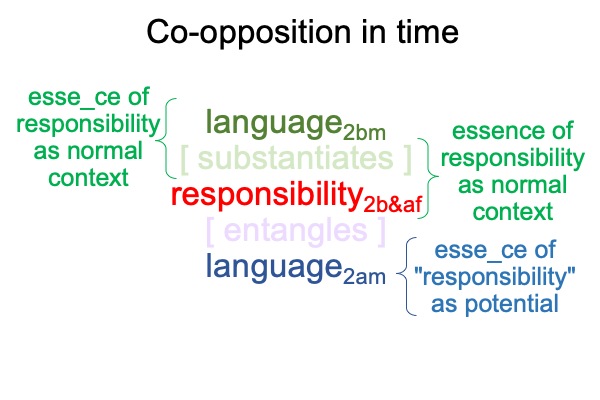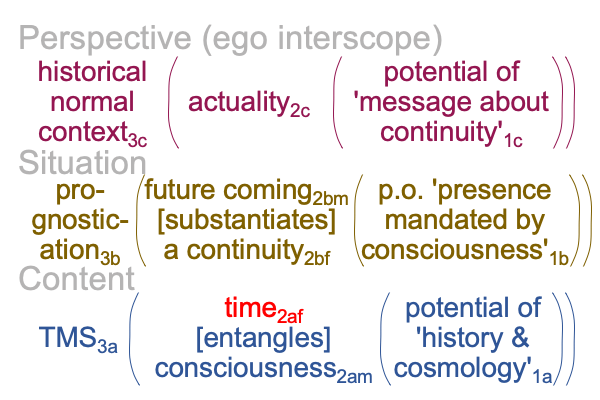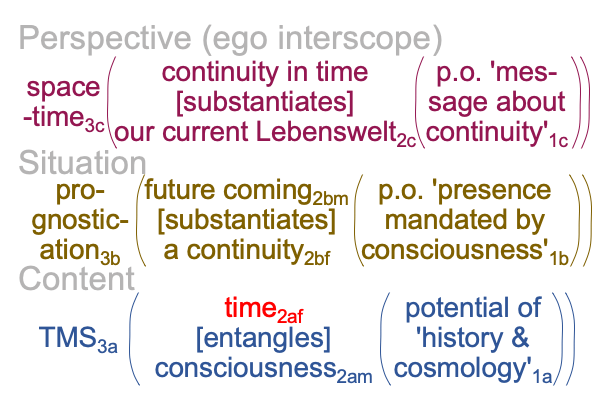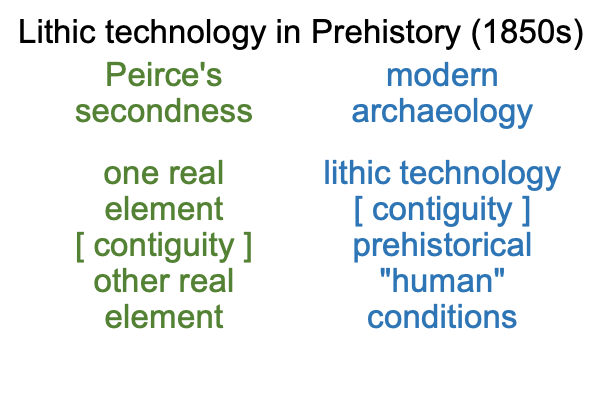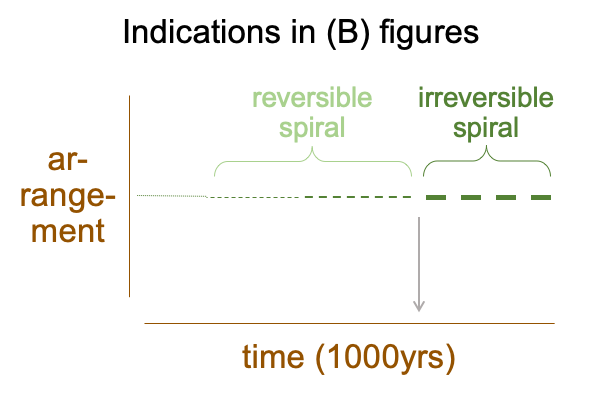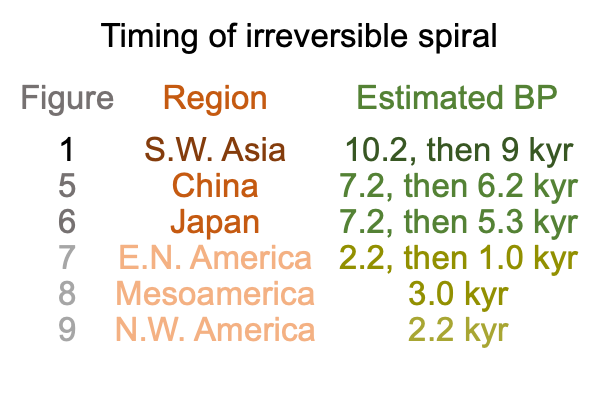Looking at Boris Uspenskij’s Article (2017) “Semiotics and Culture” (Part 2 of 8)
0653 How is this possible?
The Tartu-Moscow School of Semiotics grows out of the ambition of language departments – departments on Slavic studies – to become scientific, and gain repute in the socialist regime of the USSR. They do not fully appreciate that the mechanical philosophers of the 1600s explicitly reject Aristotle’s formal and final causes, as well as Aristotle’s hylomorphe of {matter [substance] form}. This appreciation is further muddled by the fact that the Marxist perspective-level vision (or is it “model”?) for the derivative interscope, is the hylomorphe, {material arrangements [substantiate] human conditions}2c.
0654 Plus, the Slavic civilization grows, and expresses itself, within an unbroken tradition with Aristotle (unlike the West, who regains Aristotle’s texts in the 1000s to 1200s, during the crusades to the eastern Mediterranean). My guess is that Orthodox Christians are already working with the inverse of Aristotle’s hylomorphe, {form [entangles] matter}, for centuries before the modern era. Surely, {form [entangles] matter} sounds like the stuff of angels and a God of all Creation.
0655 So, the Tartu-Moscow School of Semiotics builds on the semiology3a and structuralism3b inherent in Saussure’s tradition, while the literary texts2bf speak for themselves. They speak through hylomorphism and entanglement, through normal contexts and potentials, without providing labels for their language2bm and without scientifically translating their voices into a language2am designed to label meaning1a, presence1b and message1c.
The Tartu-Moscow School of Semiotics intends to convert the literary works2af of the Slavic civilization into models2c, whereby the literary text2af can entangle a positivist3a language2am of meaning1a, which then virtually potentiates presence1b and engages a message1c.
0656 Their intention is as Slavic as the civilization that they are trying to bring into the scientific era. Their intention may be pictured as a confounding of substance and entanglement that crosses from the fundament to the derivative (or the loquens to the ego) interscope.
Here is a picture.
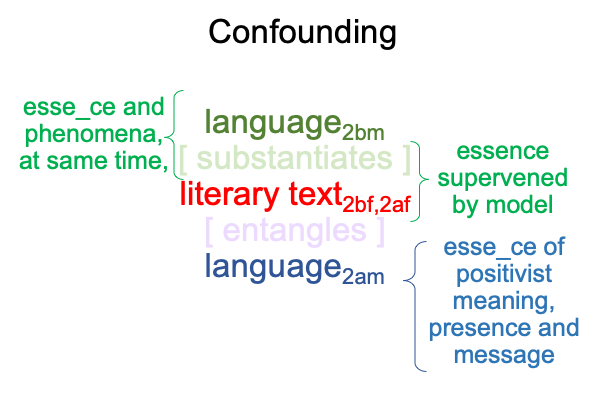
0657 What a breath-taking confounding.
The literary text2af, the thing itself, is substantiated by language2bm as esse_ce (substantiating matter), and entangles positivist language2am, the matter of meaning1a, presence1b and message1c.
0658 A casual observer has difficulty fully appreciating the daring and innovation of Lotman, Uspenskij and other members of the first ascent of the Tartu-Moscow School of Semiotics. They are like scholars pulling something old and something new from their treasures. That includes the wool that goes over the eyes of watchful authorities.
0659 Confoundings are both illuminating and treacherous. They are not to be toyed with lightly.
The esse_ce side is well constructed, using the tools of Saussure’s linguistics and Structuralism.
The essence side is open, as it must be, because that is the way of entanglement.
0660 The derivative or ego interscope allows the inquirer to see the dangers, as well as the opportunities, faced by the TMS.
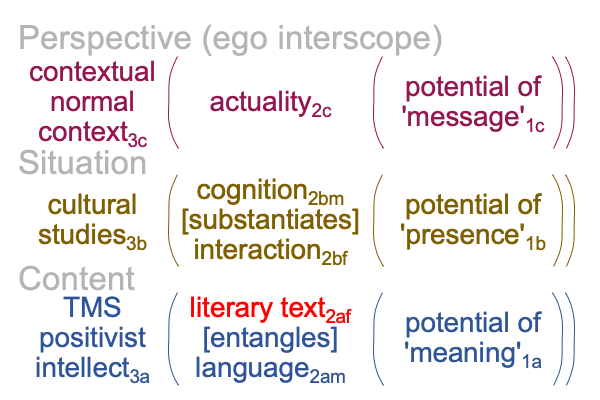
0661 On the content level, the positivist intellect of the Tartu-Moscow School 3a brings the actuality of {literary text as form2af [entangles] a language of meaning as matter2am} into relation with the possibility of ‘meaning’1a.
Surely, language as matter2bm that substantiates the form of the literary text2bf (the Slavic mother tongue) is not the same as language as a matter2am of meaning1a entangled by the literary text2af, serving as the interventional sign-object (SOi) for an interventional sign-vehicle (SVi), consisting of a semiological3a structuralist3b model2c.
0662 Interventional sign relation?
Am I getting ahead of myself?
Or am I walking a previously trod path?
0663 On the situation level, the normal context of culture (the stuff of cultural studies)3b brings the dyadic actuality of {cognition2bm [substantiates] social interactions2bf} into relation with the possibility of ‘a presence that situates the language of meaning2am‘.
In short, the language of meaning2am (that is entangled by a literary text2af as the objectification of its semiological3astructuralist3b model2c) is sensibly situated by a presence1b that makes possible the substantiation of social interactions as form2bf by cognition as matter2bm.
The key term in the last sentence is “sensibly”.
0664 The perspective level is potentiated by a ‘message’1c that contextualizes the sensible construction of the situation-level actuality2b.
0665 Notably, the perspective level actuality2c is a site of confusion between semioticians and Marxists.
Why?
It is empty, as far as the scholars of Slavic literature in the USSR are concerned.
Does that send a message1c?

